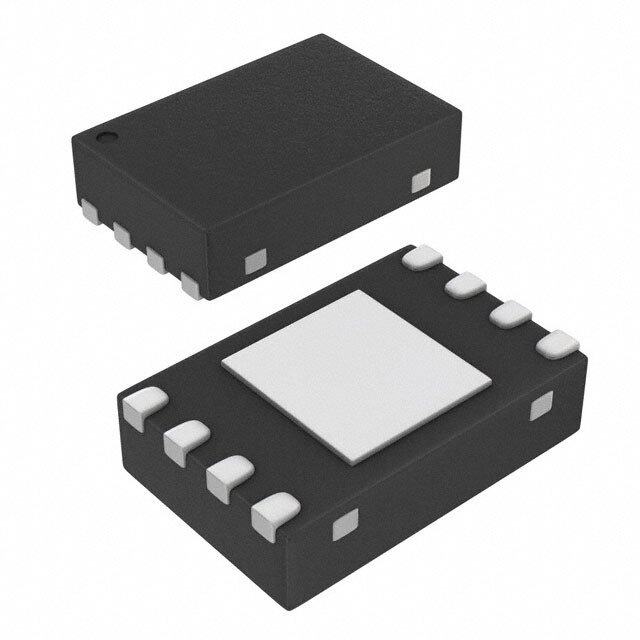ICGOO在线商城 > 集成电路(IC) > PMIC - 稳压器 - DC DC 开关稳压器 > LT3495BEDDB#TRMPBF
- 型号: LT3495BEDDB#TRMPBF
- 制造商: LINEAR TECHNOLOGY
- 库位|库存: xxxx|xxxx
- 要求:
| 数量阶梯 | 香港交货 | 国内含税 |
| +xxxx | $xxxx | ¥xxxx |
查看当月历史价格
查看今年历史价格
LT3495BEDDB#TRMPBF产品简介:
ICGOO电子元器件商城为您提供LT3495BEDDB#TRMPBF由LINEAR TECHNOLOGY设计生产,在icgoo商城现货销售,并且可以通过原厂、代理商等渠道进行代购。 LT3495BEDDB#TRMPBF价格参考。LINEAR TECHNOLOGYLT3495BEDDB#TRMPBF封装/规格:PMIC - 稳压器 - DC DC 开关稳压器, Boost, SEPIC Switching Regulator IC Positive Adjustable 2.5V 1 Output 550mA (Switch) 10-WFDFN Exposed Pad。您可以下载LT3495BEDDB#TRMPBF参考资料、Datasheet数据手册功能说明书,资料中有LT3495BEDDB#TRMPBF 详细功能的应用电路图电压和使用方法及教程。
| 参数 | 数值 |
| 产品目录 | 集成电路 (IC) |
| 描述 | IC REG BOOST ADJ 0.65A 10DFN |
| 产品分类 | |
| 品牌 | Linear Technology |
| 数据手册 | http://www.linear.com/docs/26565 |
| 产品图片 |
|
| 产品型号 | LT3495BEDDB#TRMPBF |
| PWM类型 | 混合物 |
| rohs | 无铅 / 符合限制有害物质指令(RoHS)规范要求 |
| 产品系列 | - |
| 产品目录页面 | |
| 供应商器件封装 | 10-DFN (3x2) |
| 其它名称 | LT3495BEDDB#TRMPBFDKR |
| 包装 | Digi-Reel® |
| 同步整流器 | 无 |
| 安装类型 | 表面贴装 |
| 封装/外壳 | 10-WFDFN 裸露焊盘 |
| 工作温度 | -40°C ~ 125°C |
| 标准包装 | 1 |
| 电压-输入 | 2.2 V ~ 16 V |
| 电压-输出 | 1.235 V ~ 40 V |
| 电流-输出 | 650mA |
| 类型 | 升压(升压) |
| 输出数 | 1 |
| 输出类型 | 可调式 |
| 频率-开关 | - |

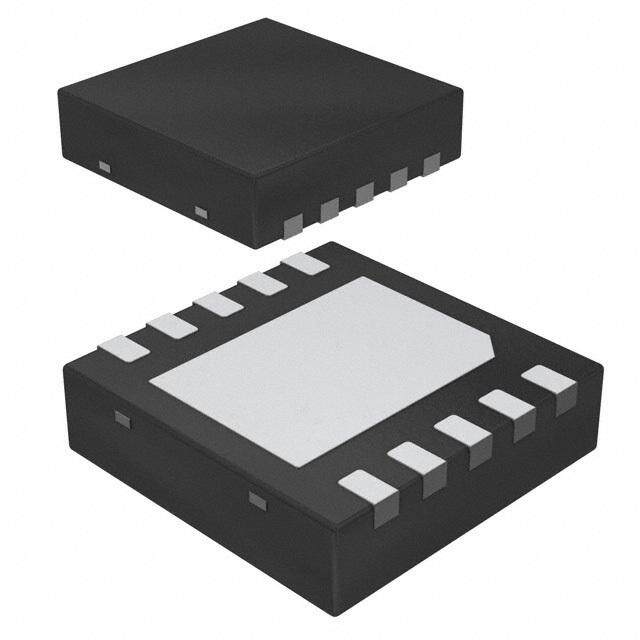


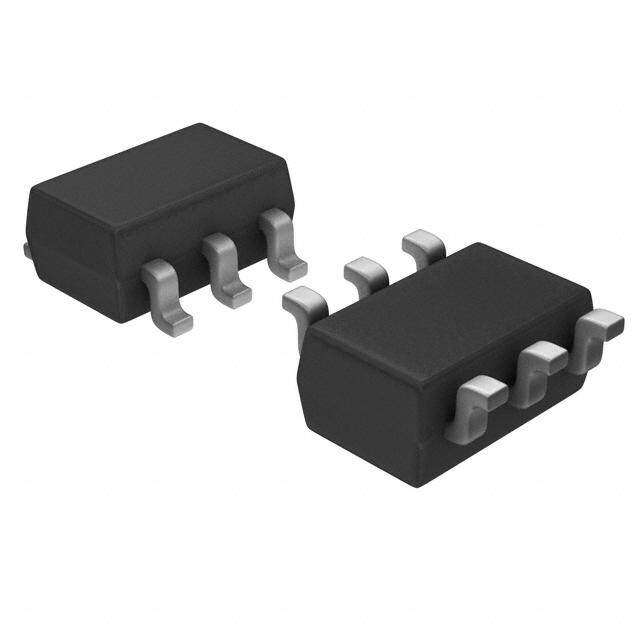
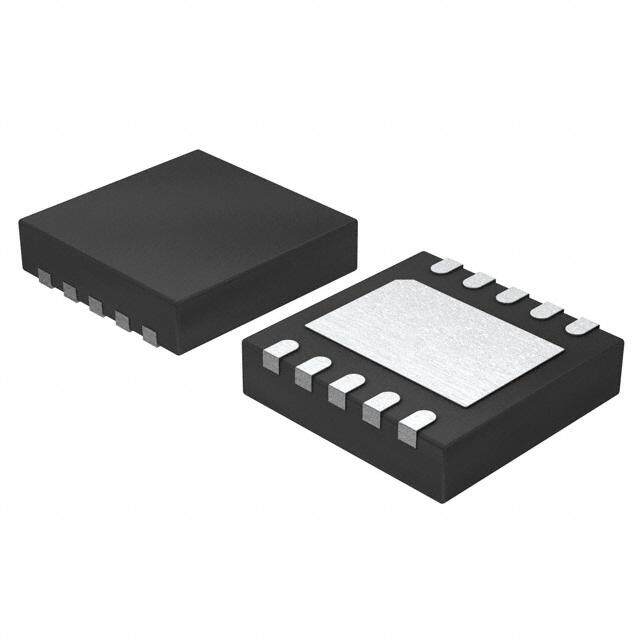
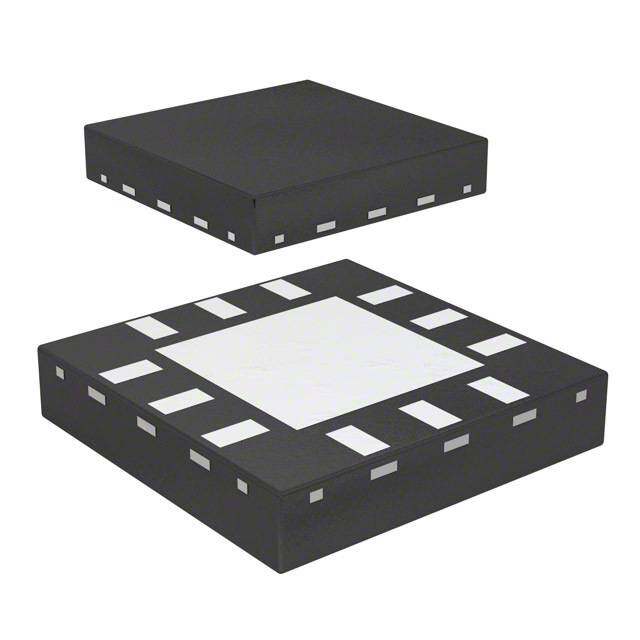

- 商务部:美国ITC正式对集成电路等产品启动337调查
- 曝三星4nm工艺存在良率问题 高通将骁龙8 Gen1或转产台积电
- 太阳诱电将投资9.5亿元在常州建新厂生产MLCC 预计2023年完工
- 英特尔发布欧洲新工厂建设计划 深化IDM 2.0 战略
- 台积电先进制程称霸业界 有大客户加持明年业绩稳了
- 达到5530亿美元!SIA预计今年全球半导体销售额将创下新高
- 英特尔拟将自动驾驶子公司Mobileye上市 估值或超500亿美元
- 三星加码芯片和SET,合并消费电子和移动部门,撤换高东真等 CEO
- 三星电子宣布重大人事变动 还合并消费电子和移动部门
- 海关总署:前11个月进口集成电路产品价值2.52万亿元 增长14.8%

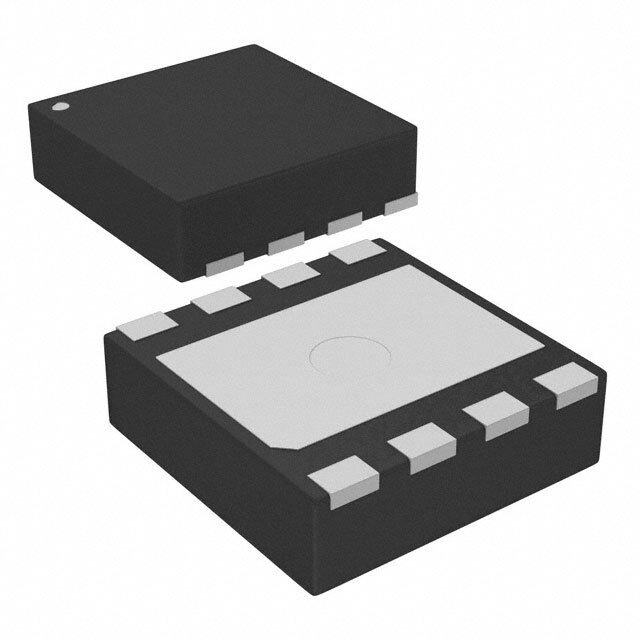
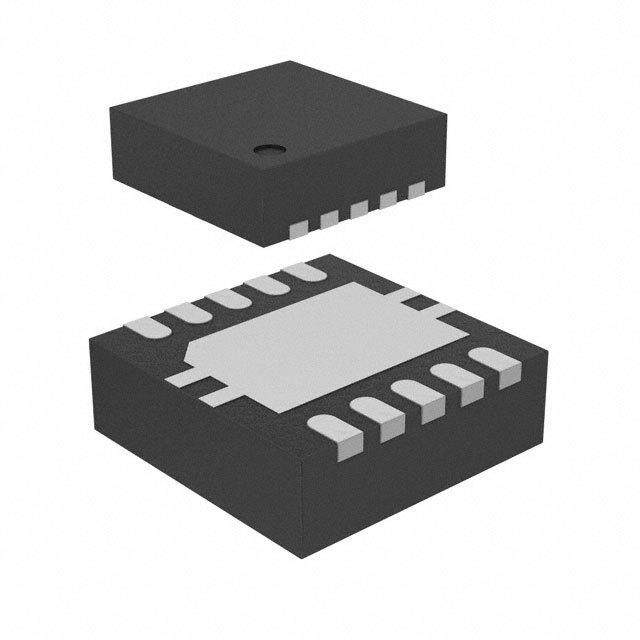


PDF Datasheet 数据手册内容提取
LT3495/LT3495B/ LT3495-1/LT3495B-1 650mA/350mA Micropower Low Noise Boost Converter with Output Disconnect FEATURES DESCRIPTION n Low Quiescent Current The LT®3495/LT3495B/LT3495-1/LT3495B-1 are low noise 60µA in Active Mode boost converters with integrated power switch, feedback 0.1µA in Shutdown Mode resistor and output disconnect circuitry. The parts control n Low Noise Control Scheme (Switching Frequency power delivery by varying both the peak inductor current Always Stays Above Audible Range for LT3495/-1) and switch off-time. This novel* control scheme results n Integrated Power NPN: in low output voltage ripple as well as high efficiency 650mA Current Limit (LT3495/B) over a wide load range. For the LT3495/LT3495-1, the 350mA Current Limit (LT3495-1/B-1) off-time of the switch is not allowed to exceed a fixed n Integrated Output Disconnect level, guaranteeing the switching frequency stays above n Integrated Output Dimming the audio band for the entire load range. The parts feature n Wide input range: 2.5V to 16V a high performance NPN power switch with a 650mA n Wide output range: Up to 40V and 350mA current limit for the LT3495/LT3495B and n Integrated feedback resistor LT3495-1/LT3495B-1 respectively. The quiescent current n Tiny 10-Lead 3mm × 2mm DFN Package is a low 60µA, which is further reduced to less than 0.1µA in shutdown. The internal disconnect circuitry allows the APPLICATIONS output voltage to be isolated from the input during shut- down. An auxiliary reference input (CTRL pin) overrides n OLED Power the internal 1.235V feedback reference with any lower n Low Noise Power value allowing full control of the output voltage during n MP3 Player operation. The LT3495 series are available in a tiny 10-lead 3mm × 2mm DFN package. L, LT, LTC and LTM are registered trademarks of Linear Technology Corporation. All other trademarks are the property of their respective owners. *Patent pending. TYPICAL APPLICATION Output Voltage Ripple OLED Power Supply from One Li-Ion Cell vs Load Current Efficiency vs Load Current 50 90 400 ONE 10µH VIN = 3.6V LCi-EIoLnL 4.7µF VSCWCLT349V5COAUPT 9029.2kµF 17V60OVmUTA K RIPPLE (mV) 4300 CAPA1C.0ITµOF R0 6A0T3 VOUT Y (%) 8700 LOAD FLROOAMD CFRAPOM VOUT 322400POWER SCHTRDLN GNFDB 1µF AK-TO-PEA 20 EFFICIENC 60 160 LOSS (mW 3495 TA01a PE ) UT10 50 80 VO 2.2µF 1206 CAPACITOR AT VOUT 0 40 0 0.1 1 10 100 0.1 1 10 100 LOAD CURRENT (mA) LOAD CURRENT (mA) 3495 TA01b 3495 TA01c 3495b1b1fa 1
LT3495/LT3495B/ LT3495-1/LT3495B-1 ABSOLUTE MAXIMUM RATINGS PIN CONFIGURATION (Note 1) TOP VIEW V Voltage ...............................................................16V CC SW Voltage ...............................................................40V GND 1 10 SW CAP Voltage ..............................................................40V GND 2 9 CAP V Voltage .............................................................40V VCC 3 11 8 CAP OUT SHDN Voltage ...........................................................10V CTRL 4 7 VOUT SHDN 5 6 FB CTRL Voltage ............................................................10V FB Voltage ................................................................2.5V DDB PACKAGE 10-LEAD (3mm × 2mm) PLASTIC DFN Maximum Junction Temperature...........................125°C TJMAX = 125°C, θJA = 76°C/W EXPOSED PAD (PIN 11) IS GND, MUST BE SOLDERED TO PCB Operating Temperature Range (Note 2)..–40°C to 125°C Storage Temperature Range ...................–65°C to 150°C ORDER INFORMATION LEAD FREE FINISH TAPE AND REEL PART MARKING PACKAGE DESCRIPTION TEMPERATURE RANGE LT3495EDDB#PBF LT3495EDDB#TRPBF LDSS 10-Lead (3mm × 2mm) Plastic DFN –40°C to 125°C LT3495EDDB-1#PBF LT3495EDDB-1#TRPBF LDSV 10-Lead (3mm × 2mm) Plastic DFN –40°C to 125°C LT3495BEDDB#PBF LT3495BEDDB#TRPBF LDST 10-Lead (3mm × 2mm) Plastic DFN –40°C to 125°C LT3495BEDDB-1#PBF LT3495BEDDB-1#TRPBF LDSW 10-Lead (3mm × 2mm) Plastic DFN –40°C to 125°C Consult LTC Marketing for parts specified with wider operating temperature ranges. Consult LTC Marketing for information on non-standard lead based finish parts. For more information on lead free part marking, go to: http://www.linear.com/leadfree/ For more information on tape and reel specifications, go to: http://www.linear.com/tapeandreel/ ELECTRICAL CHARACTERISTICS The l denotes the specifications which apply over the full operating temperature range, otherwise specifications are at T = 25°C. V = 3V, V = V , unless otherwise noted. (Note 2) A CC SHDN CC PARAMETER CONDITIONS MIN TYP MAX UNITS Minimum Operating Voltage 2.2 2.5 V Maximum Operating Voltage 16 V FB Voltage V = 3V, (Note 3) l 1.220 1.235 1.255 V CTRL FB Voltage Line Regulation 0.03 %/V FB Resistor FB Voltage = 1.235V l 74.7 76 77 kΩ Quiescent Current Not Switching 60 70 µA Quiescent Current in Shutdown V = 0V, V = 3V 0 1 µA SHDN CC Minimum Switch-Off Time After Start-Up (Note 4) 200 ns During Start-Up (Note 4) 500 ns Maximum Switch-Off Time LT3495/LT3495-1, V = 1.5V l 17 26 35 µs FB Maximum Switch-On Time 10 µs Switch Current Limit LT3495/LT3495B l 550 650 780 mA 3495b1b1fa 2
LT3495/LT3495B/ LT3495-1/LT3495B-1 ELECTRICAL CHARACTERISTICS The l denotes the specifications which apply over the full operating temperature range, otherwise specifications are at T = 25°C. V = 3V, V = V , unless otherwise noted. (Note 2) A CC SHDN CC PARAMETER CONDITIONS MIN TYP MAX UNITS Switch Current Limit LT3495-1/LT3495B-1 l 275 350 450 mA Switch V LT3495/LT3495B, I = 400mA 200 mV CESAT SW LT3495-1/LT3495B-1, I = 200mA 125 mV SW Switch Leakage Current V = 5V 0.01 1 µA SW PMOS Disconnect Current Limit After Start-Up 250 370 450 mA During Start-Up 110 150 190 mA PMOS Disconnect V – V I = 50mA, V = 15V 150 mV CAP OUT OUT CAP V – V Clamp Voltage 8.7 V CAP OUT SHDN Input Voltage High 1.5 V SHDN Input Voltage Low 0.3 V SHDN Pin Bias Current V = 3V 5.3 8 µA SHDN V = 0V 0 µA SHDN CTRL Pin Bias Current V = 0.5V, Current Flows Out of Pin l 20 100 nA CTRL CTRL to FB Offset V = 0.5V 6 14 mV CTRL Maximum Shunt Current LT3495/LT3495-1, V = 1.5V 230 µA FB Note 1: Stresses beyond those listed under Absolute Maximum Ratings Note 3: Internal reference voltage is determined by finding V voltage FB may cause permanent damage to the device. Exposure to any Absolute level which causes quiescent current to increase 150µA above “Not Maximum Rating condition for extended periods may affect device Switching” level. reliability and lifetime. Note 4: If CTRL is overriding the internal reference, Start-Up mode occurs Note 2: The LT3495/LT3495B/LT3495-1/LT3495B-1 are guaranteed to when V is less then half the voltage on CTRL. If CTRL is not overriding FB meet performance specifications from 0°C to 125°C junction temperature. the internal reference, Start-Up mode occurs when V is less then half the FB Specifications over the –40°C to 125°C operating junction temperature voltage of the internal reference. range are assured by design, characterization and correlation with statistical process controls. TYPICAL PERFORMANCE CHARACTERISTICS T = 25°C unless otherwise noted. A Switching Frequency vs Load Current Load Regulation V vs CTRL Voltage OUT 1000 1.5 18 VCC = 3.6V VCC = 3.6V FIGURE 7 CIRCUIT VOUT = 16V VOUT = 16V Hz) 800 FIGURE 7 CIRCUIT %) 1.0 FIGURE 7 CIRCUIT 15 UENCY (k 600 HANGE ( 0.5 GE (V)12 REQ GE C 0.0 OLTA 9 TCHING F 400 VOLTAUT–0.5 V VOUT 6 SWI 200 VO–1.0 3 0 –1.5 0 0 20 40 60 80 100 120 0 20 40 60 80 100 120 0 0.3 0.6 0.9 1.2 1.5 LOAD CURRENT (mA) LOAD CURRENT (mA) CTRL VOLTAGE (V) 3495 G01 3495 G02 3495 G03 3495b1b1fa 3
LT3495/LT3495B/ LT3495-1/LT3495B-1 TYPICAL PERFORMANCE CHARACTERISTICS T = 25°C unless otherwise noted. A Output Voltage vs Temperature Minimum Switching Frequency Quiescent Current - Not Switching 1.00 50 100 0.75 VVCOCU T= =3 .166VV kHz) FIGURE 7 CIRCUIT %) LOAD = 5mA Y ( 90 T VOLTAGE CHANGE (–0000....20255050 FIGURE 7 CIRCUIT WITCHING FREQUENC 4405 SCENT CURRENT (µA) 7800 U S E OUTP–0.50 MUM 35 QUI 60 –0.75 NI MI –1.00 30 50 –40 0 40 80 125 –40 0 40 80 125 2 4 6 8 10 12 14 16 TEMPERATURE (°C) TEMPERATURE (°C) VCC (V) 3495 G04 3495 G05 3495 G06 SW Saturation Voltage SW Saturation Voltage Quiescent Current vs Temperature vs Switch Current (LT3495) vs Switch Current (LT3495-1) 100 300 200 250 90 160 A) RRENT (µ 80 (mV)SAT200 (mV)SAT120 SCENT CU 70 WITCH VCE110500 WITCH VCE 80 UIE S S Q 60 40 50 50 0 0 –40 0 40 80 125 0 100 200 300 400 500 600 700 0 100 200 300 400 TEMPERATURE (°C) SWITCH CURRENT (mA) SWITCH CURRENT (mA) 3495 G07 3495 G08 3495 G09 Peak Inductor Current Peak Inductor Current SHDN Current vs SHDN Voltage vs Temperature (LT3495) vs Temperature (LT3495-1) 20 1000 600 VCC = 3.6V FIGURE 9 CIRCUIT VOUT = 16V A) FIGURE 7 CIRCUIT A) 550 m m NT (µA) 15 RENT ( 900 RENT ( 500 E R R R U U R C C N PIN CU 10 OR PEAK 800 OR PEAK 440500 SHD 5 UCT 700 UCT D D IN IN 350 0 600 300 0 2 4 6 8 10 –40 0 40 80 125 –40 0 40 80 125 SHDN PIN VOLTAGE (V) TEMPERATURE (°C) TEMPERATURE (°C) 3495 G10 3495 G11 3495 G12 3495b1b1fa 4
LT3495/LT3495B/ LT3495-1/LT3495B-1 TYPICAL PERFORMANCE CHARACTERISTICS T = 25°C unless otherwise noted. A LT3495 Switching Waveform LT3495 Switching Waveform at No Load at 10mA VOUT VOLTAGE VOUT VOLTAGE 10mV/DIV 50mV/DIV AC COUPLED AC COUPLED SW VOLTAGE SW VOLTAGE 10V/DIV 10V/DIV INDUCTOR CURRENT INDUCTOR CURRENT 100mA/DIV 500mA/DIV 10µs/DIV 2µs/DIV VCC = 3.6V 3495 G13 VCC = 3.6V 3495 G14 VOUT = 16V VOUT = 16V LT3495 Switching Waveform LT3495B-1 Switching Waveform at 80mA at No Load VOUT VOLTAGE VOUT VOLTAGE 50mV/DIV 20mV/DIV AC COUPLED AC COUPLED SW VOLTAGE SW VOLTAGE 10V/DIV 10V/DIV INDUCTOR CURRENT INDUCTOR CURRENT 500mA/DIV 100mA/DIV 500ns/DIV 20µs/DIV VCC = 3.6V 3495 G15 VCC = 5V 3495 G16 VOUT = 16V VOUT = 16V LT3495B-1 Switching Waveform LT3495B-1 Switching Waveform at 10mA at 60mA VOUT VOLTAGE VOUT VOLTAGE 50mV/DIV 50mV/DIV AC COUPLED AC COUPLED SW VOLTAGE SW VOLTAGE 10V/DIV 10V/DIV INDUCTOR CURRENT INDUCTOR CURRENT 200mA/DIV 200mA/DIV 2µs/DIV 500ns/DIV VCC = 5V 3495 G17 VCC = 5V 3495 G18 VOUT = 16V VOUT = 16V 3495b1b1fa 5
LT3495/LT3495B/ LT3495-1/LT3495B-1 TYPICAL PERFORMANCE CHARACTERISTICS T = 25°C unless otherwise noted. A Output Disconnect PMOS Current Line Regulation vs CAP to V Voltage Difference OUT 0.30 600 %)0.25 500 NGE (0.20 mA) 400 AFTER START-UP HA T ( C N 300 PUT VOLTAGE 00..1105 PMOS CURRE 120000 IN START-UP T U O0.05 IN SHUTDOWN 0 0 –100 0 4 8 12 16 0 2 4 6 8 10 12 VCC VOLTAGE (V) CAP TO VOUT VOLTAGE DIFFERENCE (V) 3495 G19 3495 G20 LT3495 Start-Up Waveforms SHDN VOLTAGE 5V/DIV INDUCTOR CURRENT 500mA/DIV CAP VOLTAGE 5V/DIV VOUT VOLTAGE 5V/DIV 50µs/DIV VCC = 3.6V 3495 G21 VOUT = 16V FIGURE 7 CIRCUIT LT3495 Transient Response LT3495-1 Transient Response 20mA → 60mA → 20mA LOAD PULSE 10mA → 30mA → 10mA LOAD PULSE VOUT VOLTAGE 200mV/DIV VOUT VOLTAGE AC COUPLED 200mV/DIV AC COUPLED INDUCTOR CURRENT 500mA/DIV INDUCTOR CURRENT 200mA/DIV LOAD CURRENT LOAD CURRENT 20mA/DIV 20mA/DIV 20µs/DIV 20µs/DIV VCC = 3.6V 3495 G22 VCC = 3.6V 3495 G23 VOUT = 16V VOUT = 16V FIGURE 7 CIRCUIT FIGURE 9 CIRCUIT 3495b1b1fa 6
LT3495/LT3495B/ LT3495-1/LT3495B-1 PIN FUNCTIONS GND (Pins 1, 2): Ground. Tie directly to local ground achieve the desired output voltage, choose R1 according plane. to the following formula: V (Pin 3): Input Supply Pin. Must be locally by- R1 = 76 • (V /1.235 – 1)kΩ CC OUT passed. V (Pin 7): Drain of Output Disconnect PMOS. Place a OUT CTRL (Pin 4): Dimming Pin. If not used, tie CTRL to 1.5V bypass capacitor from this pin to GND. See Applications or higher. If in use, drive CTRL below 1.235V to override information. the internal reference. See Applications section for more CAP (Pins 8, 9): Source of Output Disconnect PMOS. information. Place a bypass capacitor from this pin to GND. SHDN (Pin 5): Shutdown Pin. Tie to 1.5V or more to en- SW (Pin 10): Switch Pin. This is the collector of the in- able chip. Ground to shut down. ternal NPN power switch. Minimize the metal trace area FB (Pin 6): Feedback Pin. Minimize the metal trace area connected to this pin to minimize EMI. to this pin to minimize noise. Reference voltage is 1.235V. Exposed Pad (Pin 11): Ground. This pin must be soldered There is an internal 76k resistor from the FB pin to GND. To to PCB. BLOCK DIAGRAM INPUT R1 6 3 10 9 8 7 FB VCC SW CAP CAP VOUT 76k START-UP CONTROL – DISCONNECT CONTROL 4 CTRL + SWITCH CONTROL + + SHDN 5 VREF SHUNT CONTROL GND GND 2 1 11 3495 BD 3495b1b1fa 7
LT3495/LT3495B/ LT3495-1/LT3495B-1 OPERATION The LT3495 series utilizes a variable peak current, variable voltage and output voltage are close, the internal shunt off-time control scheme to provide high efficiency over a current may not be large enough. Under this condition, wide range of output current. a minimum output load is required to prevent the output voltage from drifting too high. The operation of the part can be better understood by referring to the Block Diagram. The part senses the output For the LT3495B/B-1, the minimum switching frequency voltage by monitoring the voltage on the FB pin. The user feature is disabled and the switching frequency can be as sets the desired output voltage by choosing the value of low as zero. As a result, the output voltage will never drift the external top feedback resistor. The parts incorporate high and no minimum output load is required. a precision 76k bottom feedback resistor. Assuming that The LT3495 series also has a PMOS output disconnect output voltage adjustment is not used (CTRL pin is tied to switch. The PMOS switch is turned on when the part is 1.5V or greater), the internal reference (V = 1.235V) sets REF enabled via the SHDN pin. When the parts are in shutdown, the voltage at which FB will servo to during regulation. the PMOS switch turns off, allowing the V node to go to OUT The Switch Control block senses the output of the ampli- ground. This type of disconnect function is often required fier and adjusts the switching frequency as well as other in power supplies. parameters to achieve regulation. During the start-up of The LT3495 series also sets a maximum switch on time of the circuit, special precautions are taken to ensure that 10µs. This feature guarantees that the parts can continue the inductor current remains under control. to deliver energy to the output even if the input supply For the LT3495/LT3495-1, the switching frequency is never impedance becomes so large that the commanded peak allowed to fall below approximately 45kHz. Because of this, switch current is never reached. a minimum load must be present to prevent the output The difference between the LT3495/LT3495B and LT3495-1/ voltage from drifting too high. For most applications, this LT3495B-1 is the level of the current limit. LT3495/LT3495B minimum load is automatically generated within the part have a typical peak current limit of 650mA while the via the Shunt Control block. The level of this current is LT3495-1/LT3495B-1 have a typical peak current limit of adaptable, removing itself when not needed to improve 350mA. The differences between the LT3495 and LT3495B/ efficiency at higher load levels. However when the input LT3495-1/LT3495B-1 are listed in Table 1. Table 1. Difference Between LT3495 and LT3495B/LT3495-1/LT3495B-1 PART SWITCH CURRENT LIMIT (mA) MINIMUM SWITCHING FREQUENCY (kHz) MINIMUM OUTPUT LOAD REQUIREMENT LT3495 650 45 Required under certain conditions LT3495B 650 0 Not Required LT3495-1 350 45 Required under certain conditions LT3495B-1 350 0 Not Required 3495b1b1fa 8
LT3495/LT3495B/ LT3495-1/LT3495B-1 APPLICATIONS INFORMATION Inductor Selection input capacitor and a 1µF to 10µF output capacitor are sufficient for most applications. Always use a capacitor Several inductors that work well with the LT3495/LT3495B with a sufficient voltage rating. Many capacitors rated at are listed in Table 2 and those for the LT3495-1/LT3495B-1 1µF to 10µF, particularly 0603 case sizes, have greatly are listed in Table 3. These tables are not complete, and reduced capacitance when bias voltages are applied. Be there are many other manufacturers and devices that can sure to check actual capacitance at the desired output be used. Consult each manufacturer for more detailed voltage. Generally a 0805 or 1206 size capacitor will be information and for their entire selection of related parts, adequate. A 2.2µF capacitor placed on the CAP node is as many different sizes and shapes are available. recommended to filter the inductor current while a 1µF to Inductors with a value of 3.3µH or higher are recommended 10µF capacitor placed on the V node will give excellent OUT for most LT3495 series designs. Inductors with low core transient response and stability. Table 4 shows a list of losses and small DCR (copper wire resistance) are good several capacitor manufacturers. Consult the manufac- choices for LT3495 series applications. For full output turers for more detailed information and for their entire power, the inductor should have a saturation current rating selection of related parts. higher than the peak inductor current. The peak inductor Table 3. Recommended Inductors for LT3495-1/LT3495B-1 current can be calculated as: L DCR V •200•10–9 PART (µH) (mΩ) SIZE (mm) VENDOR I =I + IN amps PK LIMIT LPO4815-472MLC 4.7 150 4.8 × 4.8 × 1.5 Coilcraft L LPO4815-682MLC 6.8 180 4.8 × 4.8 × 1.5 www.coilcraft.com LPO4815-103MLC 10 230 4.8 × 4.8 × 1.5 where I is 0.65A and 0.35A for LT3495/LT3495B and LIMIT LPS3008-472MLC 4.7 350 3.0 × 3.0 × 0.8 LT3495-1/LT3495B-1 respectively. L is the inductance LPS3008-682MLC 6.8 500 3.0 × 3.0 × 0.8 LPS3008-103MLC 10 650 3.0 × 3.0 × 0.8 value in Henrys and V is the input voltage to the boost IN circuit. LQH32CN4R7M53 4.7 150 3.2 × 2.5 × 1.6 Murata LQH32CN100K33 10 300 3.2 × 2.5 × 2.0 www.murata.com Table 2. Recommended Inductors for LT3495/LT3495B CDH28D09/S-6R2 6.2 369 3.3 × 3.0 × 1.0 Sumida www.sumida.com L DCR PART (µH) (mΩ) SIZE (mm) VENDOR 744030004 4.7 290 3.5 × 3.3 × 1.0 Wurth Elektronik www.we-online.com LPS4018-103ML 10 200 4.4 × 4.4 × 1.7 Coilcraft MSS5131-103MLC 10 83 5.1 × 5.1 × 3.1 www.coilcraft.com LPS3015-472MLC 4.7 200 3.0 × 3.0 × 1.5 Table 4. Recommended Ceramic Capacitor Manufacturers LPS3015-682MLC 6.8 300 3.0 × 3.0 × 1.5 MANUFACTURER PHONE WEBSITE LQH43CN4R7M03 4.7 150 4.5 × 3.2 × 2.8 Murata www.murata.com Taiyo Yuden (408) 573-4150 www.t-yuden.com CR32-6R8 6.8 202 4.1 × 3.7 × 3.0 Sumida AVX (843) 448-9411 www.avxcorp.com www.sumida.com Murata (814) 237-1431 www.murata.com 744031004 4.7 105 3.8 × 3.8 × 1.7 Wurth Elektronik Kemet (408) 986-0424 www.kemet.com www.we-online.com TDK (847) 803-6100 www.tdk.com Capacitor Selection Diode Selection The small size and low ESR of ceramic capacitors makes Schottky diodes, with their low forward voltage drops and them suitable for most LT3495 series applications. X5R fast switching speeds, are recommended for use with the and X7R types are recommended because they retain LT3495 series. The Diodes Inc. B0540WS-7 is a very good their capacitance over wider voltage and temperature choice. This diode is rated to handle an average forward ranges than other types such as Y5V or Z5U. A 4.7µF current of 0.5A with 40V reverse breakdown. 3495b1b1fa 9
LT3495/LT3495B/ LT3495-1/LT3495B-1 APPLICATIONS INFORMATION Setting Output Voltage and the Auxiliary Reference Choosing a Feedback Node Input The single feedback resistor may be connected to the The LT3495 series is equipped with both an internal V pin or to the CAP pin (see Figure 2). Regulating the OUT 1.235V reference and an auxiliary reference input. This V pin eliminates the output offset resulting from the OUT allows the user to select between using the built-in refer- voltage drop across the output disconnect PMOS. Regu- ence and supplying an external reference voltage. The lating the CAP pin does not compensate for the voltage voltage at the CTRL pin can be adjusted while the chip is drop across the output disconnect, resulting in an output operating to alter the output voltage for purposes such voltage V that is slightly lower than the voltage set by OUT as display dimming or contrast adjustment. To use the the resistor divider. Under most conditions, it is advised internal 1.235V reference, the CTRL pin must be held that the feedback resistor be tied to the V pin. OUT higher than 1.5V. When the CTRL pin is held between 0V and 1.235V, the parts will regulate the output such that Connecting the Load to the CAP Node the FB pin voltage is nearly equal to the CTRL pin voltage. The efficiency of the converter can be improved by con- At CTRL voltages close to 1.235V, a soft transition occurs necting the load to the CAP pin instead of the V pin. OUT between the CTRL pin and the internal reference. Figure 1 The power loss in the PMOS disconnect circuit is then shows this behavior. made negligible. By connecting the feedback resistor to To set the maximum output voltage, select the values of the VOUT pin, no quiescent current will be consumed in the R1 according to the following equation: feedback resistor string during shutdown since the PMOS transistor will be open (see Figure 3). The disadvantage ⎛ V ⎞ R1=76• OUT –1 kΩ of this method is that the CAP node cannot go to ground ⎜ ⎟ ⎝1.235 ⎠ during shutdown, but will be limited to around a diode drop below V . Loads connected to the part should only CC When CTRL is used to override the internal reference, sink current. Never force external power supplies onto the output voltage can be lowered from the maximum the CAP or V pins. OUT value down to nearly the input voltage level. If the volt- age source driving the CTRL pin is located at a distance to the LT3495, a small 0.1µF capacitor may be needed to C1 C1 SW CAP SW CAP bypass the pin locally. VCC VOUT VOUT VCC VOUT LT3495 R1 C3 LT3495 R1 1.5 SHDN FB SHDN FB CTRL GND CTRL GND 3495 F02 1.2 Figure 2. Feedback Connection Using V) the CAP Pin or the VOUT Pin E (0.9 G A LT O V0.6 B F C1 ILOAD SW CAP 0.3 VCC VOUT LT3495 0 SHDN FB 0 0.3 0.6 0.9 1.2 1.5 CTRL VOLTAGE (V) CTRL GND 3495 F01 3495 F03 Figure 1. CTRL to FB Transfer Curve Figure 3. Improved Efficiency Connection 3495b1b1fa 10
LT3495/LT3495B/ LT3495-1/LT3495B-1 APPLICATIONS INFORMATION Maximum Output Load Current Inrush Current The maximum output current of a particular LT3495 series When V is stepped from ground to the operating voltage CC circuit is a function of several circuit variables. The fol- while the output capacitor is discharged, a higher level of lowing method can be helpful in predicting the maximum inrush current may flow through the inductor and Schottky load current for a given circuit: diode into the output capacitor. Conditions that increase inrush current include a larger more abrupt voltage step Step 1: Calculate the peak inductor current: at V , a larger output capacitor tied to the CAP pin and an IN V •200•10–9 inductor with a low saturation current. While the chip is I =I + IN amps PK LIMIT designed to handle such events, the inrush current should L not be allowed to exceed 1.5A. For circuits that use output where ILIMIT is 0.65A and 0.35A for LT3495/LT3495B and capacitor values within the recommended range and have LT3495-1/LT3495B-1 respectively. L is the inductance input voltages of less than 5V, inrush current remains low, value in Henrys and VIN is the input voltage to the boost posing no hazard to the device. In cases where there are circuit. large steps at V (more than 5V) and/or a large capacitor CC is used at the CAP pin, inrush current should be measured Step 2: Calculate the inductor ripple current: to ensure safe operation. (V +1–V )•200•10–9 OUT IN IRIPPLE = amps Soft-Start L By connecting the SHDN and CTRL pins as shown in where V is the desired output voltage. If the inductor OUT Figure 4, using an RC filter at the CTRL pin to limit the ripple current is greater than the peak current, then the start-up current, the LT3495 is able to achieve soft-start. circuit will only operate in discontinuous conduction mode. The small bias current of the CTRL pin allows using a The inductor value should be increased so that I < I . RIPPLE PK small capacitor for a large RC time constant. The soft- An application circuit can be designed to operate only in start waveform is shown in Figure 5. The soft-start time discontinuous mode, but the output current capability will be reduced. SW CAP Step 3: Calculate the average input current: VCC VOUT LT3495 I I =I – RIPPLE amps CHIP ENABLE SHDN FB IN(AVG) PK 2 RCTRL CTRL GND 3495 F04 Step 4: Calculate the nominal output current: CCTRL I •V •0.8 IN(AVG) IN I = amps Figure 4. Soft-Start Circuitry OUT(NOM) V OUT SHDN VOLTAGE Step 5: Derate output current: 5V/DIV INDUCTOR CURRENT I = I • 0.8 amps OUT OUT(NOM) 500mA/DIV For low output voltages the output current capability will CTRL VOLTAGE 2V/DIV be increased. When using output disconnect (load cur- rent taken from VOUT), these higher currents will cause VOUT VOLTAGE 5V/DIV the drop in the PMOS switch to be higher resulting in 500µs/DIV reduced output current capability than those predicted VCC = 3.6V 3495 F05 VOUT = 16V by the preceding equations. Figure 5. Soft-Start Waveform 3495b1b1fa 11
LT3495/LT3495B/ LT3495-1/LT3495B-1 APPLICATIONS INFORMATION can be set by the value of R and C . The following Also be aware of the thermal dissipation in the PMOS at CTRL CTRL expression can be used to design the soft-start time: all times. In addition, if the input voltage is more than 8V, the PMOS will turn on during shutdown, resulting in the ⎛ V ⎞ T =R •C •In SHDN output voltage no longer being blocked from the input. START−UP CTRL CTRL ⎜ ⎟ ⎝ V –1.235⎠ Under this condition, the output voltage will be about 8V SHDN lower than the input voltage. where V is the voltage at SHDN pin when the part is SHDN enabled. To ensure soft-start will work, the initial voltage Board Layout Considerations at CTRL pin when the part is enabled should be close to As with all switching regulators, careful attention must be 0V. The soft-start may not work if this initial condition is paid to the PCB board layout and component placement. not satisfied. To maximize efficiency, switch rise and fall times are made as short as possible. To prevent electromagnetic interfer- Output Disconnect ence (EMI) problems, proper layout of the high frequency The LT3495 series has an output disconnect PMOS that switching path is essential. The voltage signal of the blocks the load from the input during shutdown. During SW pin has sharp rising and falling edges. Minimize the normal operation, the maximum current through the PMOS length and area of all traces connected to the SW pin and is limited by circuitry inside the chip. When the CAP and always use a ground plane under the switching regulator V voltage difference is more than 8.7V (typ), the cur- to minimize interplane coupling. In addition, the FB pin OUT rent through the PMOS is no longer limited, and can be feeds into the internal error amplifier and is sensitive to much higher. As a result, forcing 8.7V or higher voltage noise. Minimizing the length and area of all traces to this from the CAP to the V pins can damage the PMOS. pin is recommended. Connect the feedback resistor R1 OUT In cases when the CAP voltage is high and/or a large ca- directly from the V pin to the FB pin and keep the trace OUT pacitor is used at the CAP pin, shorting V to GND can as short as possible. Recommended component placement OUT cause large PMOS currents to flow. Under this condition, is shown in Figure 6. the PMOS peak current should be kept at less than 1A. GND SW GND CAP VCC GND CAP CTRL VOUT SHDN FB GND 3495 F06 CTRLSHDN VIAS TO GROUND PLANE REQUIRED VIAS FOR CAP GROUND RETURN THROUGH TO IMPROVE THERMAL PERFORMANCE SECOND METAL LAYER, CAPACITOR GROUNDS MUST BE RETURNED DIRECTLY TO IC GROUND Figure 6. Recommended Board Layout 3495b1b1fa 12
LT3495/LT3495B/ LT3495-1/LT3495B-1 TYPICAL APPLICATIONS L1 Efficiency vs Load Current 10µH D1 90 400 ONE Li-Ion CELL C1 C2 VIN = 3.6V LOAD FROM CAP 4.7µF 2.2µF SW CAP 80 320 OUTPUT 16V LOAD FROM VOUT VCC VOUT 70mA P %) OW LT3495 R1 C3 Y ( 70 240ER 909k 1µF NC LO CIE SS TURN ON/OFF SHDN FB FFI 60 160 (m E W VOUT DIMMING CTRL GND ) 3495 F07a 50 80 C1: 4.7µF, 6.3V, X5R, 0603 C2: 2.2µF, 25V, X5R, 0805 40 0 C3: 1µF, 25V, X5R, 0603 0.1 1 10 100 D1: DIODES INC. B0540WS-7 LOAD CURRENT (mA) L1: COILCRAFT LPS4018-103MLB 3495 F07b Figure 7. One Li-Ion Cell Input Boost Converter with the LT3495 L1 Efficiency vs Load Current 6.8µH D1 90 400 ONE Li-Ion CELL C1 C2 VIN = 3.6V LOAD FROM CAP 4.7µF 2.2µF SW CAP 80 320 VCC VOUT O70UmTPAUT 16V LOAD FROM VOUT P %) OW LT3495B R1 C3 Y ( 70 240ER 909k 1µF NC LO CIE SS TURN ON/OFF SHDN FB FFI 60 160 (m E W VOUT DIMMING CTRL GND ) 3495 F08a 50 80 C1: 4.7µF, 6.3V, X5R, 0603 C2: 2.2µF, 25V, X5R, 0805 40 0 C3: 1µF, 25V, X5R, 0603 0.1 1 10 100 D1: DIODES INC. B0540WS-7 LOAD CURRENT (mA) L1: SUMIDA CR32-6R8 3495 F08b Figure 8. One Li-Ion Cell Input Boost Converter with the LT3495B LT3495/LT3495B Maximum Output Current vs Output Voltage R1 VALUE REQUIRED MAXIMUM OUTPUT V (MΩ) CURRENT AT 3V INPUT (mA) OUT 40 2.37 26 35 2.05 31 30 1.78 37 25 1.47 43 20 1.15 57 15 0.845 74 10 0.536 120 5 0.232 250 3495b1b1fa 13
LT3495/LT3495B/ LT3495-1/LT3495B-1 TYPICAL APPLICATIONS One Li-Ion Cell Input Boost Converter with the LT3495-1/LT3495B-1 Efficiency vs Load Current 90 250 L1 VIN = 3.6V 10µH D1 LOAD FROM CAP ONE LI-ION CELL C1 C2 80 200 2.2µF 1µF VSCWC VCOAUPT O30UmTPAUT 16V Y (%) 70 150POWER NC LOAD FROM VOUT LO LTLT33449955B--11/ 909k C1µ3F FFICIE 60 100SS (m E W ) TURN ON/OFF SHDN FB 50 50 VOUT DIMMING CTRL GND 3495 F09a 40 0 C1: 2.2µF, 6.3V, X5R, 0603 0.1 1 10 100 C2: 1µF, 25V, X5R, 0603 LOAD CURRENT (mA) C3: 1µF, 25V, X5R, 0603 3495 F09b D1: DIODES INC. B0540WS-7 L1: MURATA LQH32CN100K33 LT3495-1/LT3495B-1 Maximum Output Current vs Output Voltage R1 VALUE REQUIRED MAXIMUM OUTPUT V (MΩ) CURRENT AT 3V INPUT (mA) OUT 40 2.37 12 35 2.05 15 30 1.78 18 25 1.47 21 20 1.15 28 15 0.845 36 10 0.536 63 5 0.232 120 5V to 12V, 130mA Boost Converter Efficiency vs Load Current 100 900 L1 10µH D1 90 LOAD FROM CAP 750 VIN = 5V C1 C2 4.7µF 2.2µF LOAD FROM VOUT P SW CAP %) 80 600 OW VCC VOUT V13O0UmT A= 12V NCY ( 70 450 ER LO LT3495B 665k C103µF FFICIE SS (m E 60 300 W ) TURN ON/OFF SHDN FB 50 150 VOUT DIMMING CTRL GND 3495 TA02a 40 0 C1: 4.7µF, 6.3V, X5R, 0603 0.1 1 10 100 1000 C2: 2.2µF, 25V, X5R, 0805 LOAD CURRENT (mA) C3: 10µF, 25V, X5R, 1206 3495 TA02b D1: DIODES INC. B0540WS-7 L1: COILCRAFT LPS4018-103MLB 3495b1b1fa 14
LT3495/LT3495B/ LT3495-1/LT3495B-1 TYPICAL APPLICATIONS Wide Input Range SEPIC Converter with 5V Output Efficiency vs Load Current C2 90 1200 10Lµ1H 1µF D1 VCC = 3.3V INPUT 1000 2.6V TO 12V C1 C3 80 2.2µF SW CAP L120µH 10µF %) 800 POW VCC VOUT Y ( 70 ER VOUT = 5V NC 600 LO LT3495B 230000mmAA,, VVIINN == 35.V3,V, FFICIE 60 SS (m 500mA, VIN = 8V E 400 W 232k ) TURN ON/OFF SHDN FB 50 200 VOUT DIMMING CTRL GND 3495 TA03a 40 0 C1: 2.2µF, 16V, X5R, 0805 0.1 1 10 100 1000 C2: 1µF, 16V, X5R, 0805 LOAD CURRENT (mA) C3: 10µF, 16V, X5R, 1206 3495 TA03b D1: FAIRCHILD SEMI MBR0540 L1, L2: COILCRAFT LPS4018-103MLB PACKAGE DESCRIPTION DDB Package 10-Lead Plastic DFN (3mm × 2mm) (Reference LTC DWG # 05-08-1722 Rev Ø) 0.64 ±0.05 3.00 ±0.10 R = 0.115 0.40 ± 0.10 (2 SIDES) R = 0.05 TYP (2 SIDES) TYP 6 10 0.70 ±0.05 2.55 ±0.05 2.00 ±0.10 1.15 ±0.05 PIN 1 BAR (2 SIDES) PIN 1 TOP MARK R = 0.20 OR PACKAGE (SEE NOTE 6) 0.64 ± 0.05 0.25 × 45° OUTLINE (2 SIDES) 5 1 CHAMFER (DDB10) DFN 0905 REV Ø 0.25 ± 0.05 0.200 REF 0.75 ±0.05 0.25 ± 0.05 0.50 BSC 0.50 BSC 2.39 ±0.05 2.39 ±0.05 (2 SIDES) (2 SIDES) 0 – 0.05 RECOMMENDED SOLDER PAD PITCH AND DIMENSIONS BOTTOM VIEW—EXPOSED PAD NOTE: 1. DRAWING CONFORMS TO VERSION (WECD-1) IN JEDEC PACKAGE OUTLINE M0-229 2.DRAWING NOT TO SCALE 3.ALL DIMENSIONS ARE IN MILLIMETERS 4. DIMENSIONS OF EXPOSED PAD ON BOTTOM OF PACKAGE DO NOT INCLUDE MOLD FLASH. MOLD FLASH, IF PRESENT, SHALL NOT EXCEED 0.15mm ON ANY SIDE 5. EXPOSED PAD SHALL BE SOLDER PLATED 6.SHADED AREA IS ONLY A REFERENCE FOR PIN 1 LOCATION ON THE TOP AND BOTTOM OF PACKAGE 3495b1b1fa Information furnished by Linear Technology Corporation is believed to be accurate and reliable. 15 However, no responsibility is assumed for its use. Linear Technology Corporation makes no representa- tion that the interconnection of its circuits as described herein will not infringe on existing patent rights.
LT3495/LT3495B/ LT3495-1/LT3495B-1 TYPICAL APPLICATION Adjustable High Voltage Power Supply Doesn’t Need a Transformer Output vs CTRL DANGER HIGH VOLTAGE! OPERATION BY HIGH VOLTAGE TRAINED PERSONNEL ONLY 150 C4 C6 1µF 1µF 120 L1 3.3V ITNOP U8VT C4.17µF 22µH SW D5CAP C1µ2F D1C1µ5F D2 D1C3µ7F D4 VOLTAGE (V)90 VCC VOUT V OUT60 C3 TURN ON/OFF SHLDTN3495BFB 1µF 909k 11V08OmmUTAA 1 ((5VVVIINN T ==O 351.V23)0VV) 30 VOUT DIMMING CTRL GND 10.7k 35mA (VIN = 8V) 00 0.3 0.6 0.9 1.2 1.5 1.8 2.1 C1: 4.7µF, 16V, X5R, 0805 3495 TA04a CTRL VOLTAGE (V) C2-C7: 1µF, 50V, X5R, 0805 3495 TA04b D1-D5: DIODE INC. B0540WS-7 L1: COILCRAFT LPS4018-223MLB Efficiency vs Load Current Output Voltage Ripple vs Load Current 90 600 700 VIN = 5V VIN = 5V 80 VOUT = 120V 500 V) 600 VOUT = 120V m EFFICIENCY (%) 567000 234000000POWER LOSS (mW AK-TO-PEAK RIPPLE ( 453000000 ) PE 200 40 100 V OUT100 30 0 0 0.1 1 10 100 0 4 8 12 16 20 LOAD CURRENT (mA) LOAD CURRENT (mA) 3495 TA04c 3495 TA04d RELATED PARTS PART NUMBER DESCRIPTION COMMENTS LT1930/LT1930A 1A (I ), 1.2MHz/2.2MHz, High Efficiency Step-Up V : 2.6V to 16V, V = 34V, I = 4.2mA/5.5mA, I < 1µA, SW IN OUT(MAX) Q SD DC/DC Converters ThinSOT Package LT1945 (Dual) Dual Output, Boost/Inverter, 350mA (I ), Constant Off- V : 1.2V to 15V, V = ±34V, I = 40µA, I < 1µA, SW IN OUT(MAX) Q SD Time, High Efficiency Step-Up DC/DC Converter 10-Lead MS Package LT1946/LT1946A 1.5A (I ), 1.2MHz/2.7MHz, High Efficiency Step-Up V : 2.45V to 16V, V = 34V, I = 3.2mA, I < 1µA, SW IN OUT(MAX) Q SD DC/DC Converters 8-Lead MS Package LT3463/LT3463A Dual Output, Boost/Inverter, 250mA (I ), Constant V : 2.3V to 15V, V = ±40V, I = 40µA, I < 1µA, SW IN OUT(MAX) Q SD Off-Time, High Efficiency Step-Up DC/DC Converters with DFN Package Integrated Schottkys LT3467/LT3467A 1.1A (I ), 1.3MHz/2.1MHz, High Efficiency Step-Up V : 2.4V to 16V, V = 40V, I = 1.2mA, I < 1µA, SW IN OUT(MAX) Q SD DC/DC Converters with Soft-Start ThinSOT Package LT3471 Dual Output, Boost/Inverter, 1.3A (I ), High Efficiency V : 2.4V to 16V, V = ±40V, I = 2.5mA, I < 1µA, SW IN OUT(MAX) Q SD Boost-Inverting DC/DC Converter DFN Package LT3473/LT3473A 1A (I ), 1.2MHz, High Efficiency Step-Up DC/DC V : 2.2V to 16V, V = 36V, I = 100µA, I < 1µA, SW IN OUT(MAX) Q SD Converters with Integrated Schottky Diode and Output DFN Package Disconnect LT3494/LT3494A 180mA/350mA (I ), High Efficiency Step-Up DC/DC V : 2.1V to 16V, V = 40V, I = 65µA, I < 1µA, SW IN OUT(MAX) Q SD Converters with Output Disconnect DFN Package LT3580 2A, 40V, 2.5MHz Boost DC/DC Converter V : 2.5V to 32V, V = 40V, I = 1mA, I < 1µA, IN OUT(MAX) Q SD MS8E 3mm × 3mm DFN-8 Package 3495b1b1fa 16 Linear Technology Corporation LT 0209 REV A • PRINTED IN USA 1630 McCarthy Blvd., Milpitas, CA 95035-7417 (408) 432-1900 ● FAX: (408) 434-0507 ● www.linear.com LINEAR TECHNOLOGY CORPORATION 2008

 Datasheet下载
Datasheet下载
